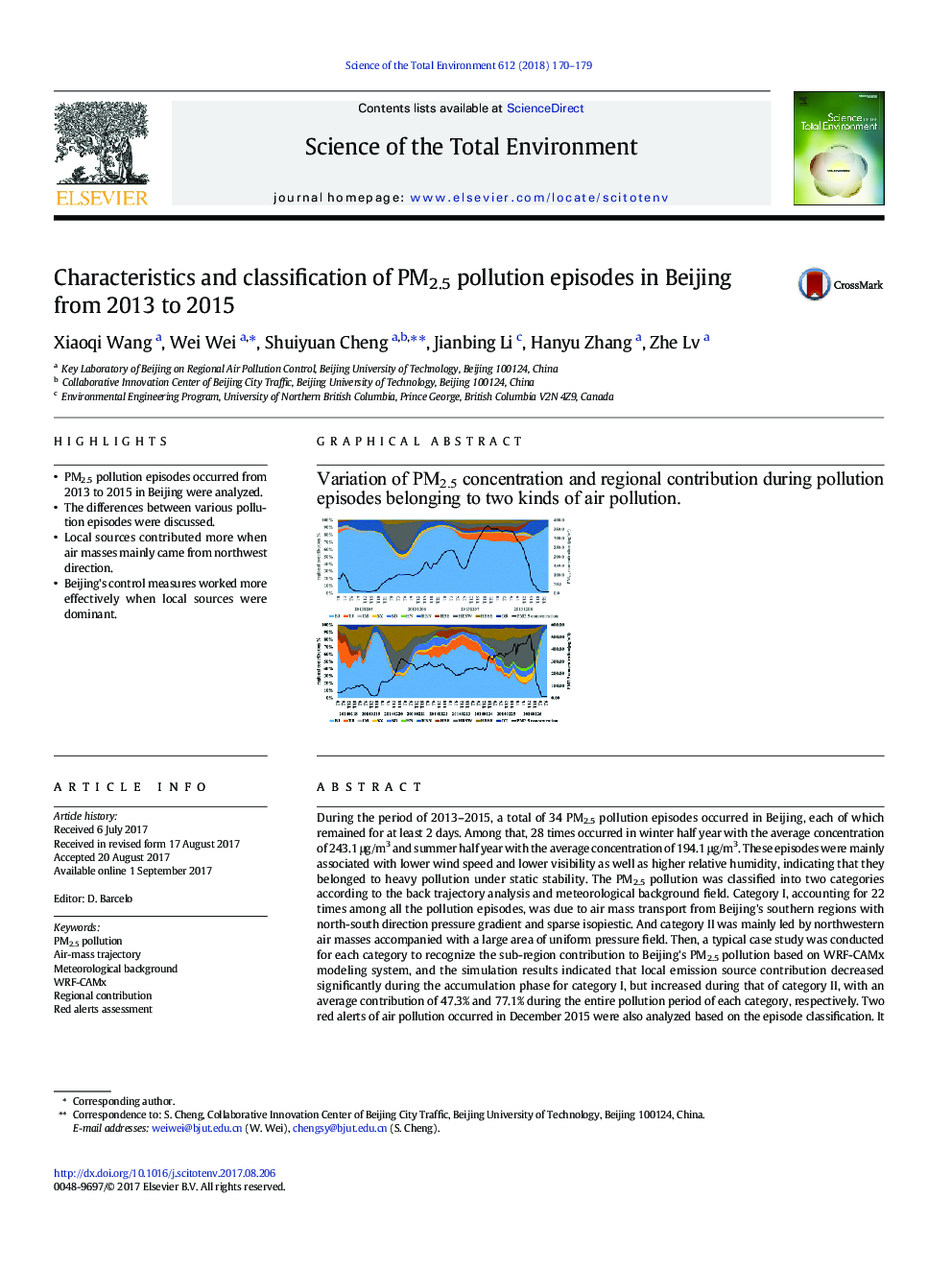| کد مقاله | کد نشریه | سال انتشار | مقاله انگلیسی | نسخه تمام متن |
|---|---|---|---|---|
| 5749872 | 1619691 | 2018 | 10 صفحه PDF | دانلود رایگان |

- PM2.5 pollution episodes occurred from 2013 to 2015 in Beijing were analyzed.
- The differences between various pollution episodes were discussed.
- Local sources contributed more when air masses mainly came from northwest direction.
- Beijing's control measures worked more effectively when local sources were dominant.
During the period of 2013-2015, a total of 34 PM2.5 pollution episodes occurred in Beijing, each of which remained for at least 2 days. Among that, 28 times occurred in winter half year with the average concentration of 243.1 μg/m3 and summer half year with the average concentration of 194.1 μg/m3. These episodes were mainly associated with lower wind speed and lower visibility as well as higher relative humidity, indicating that they belonged to heavy pollution under static stability. The PM2.5 pollution was classified into two categories according to the back trajectory analysis and meteorological background field. Category I, accounting for 22 times among all the pollution episodes, was due to air mass transport from Beijing's southern regions with north-south direction pressure gradient and sparse isopiestic. And category II was mainly led by northwestern air masses accompanied with a large area of uniform pressure field. Then, a typical case study was conducted for each category to recognize the sub-region contribution to Beijing's PM2.5 pollution based on WRF-CAMx modeling system, and the simulation results indicated that local emission source contribution decreased significantly during the accumulation phase for category I, but increased during that of category II, with an average contribution of 47.3% and 77.1% during the entire pollution period of each category, respectively. Two red alerts of air pollution occurred in December 2015 were also analyzed based on the episode classification. It was found that the second red alert pollution episode belonged to category II. The emission control measures in Beijing worked more obviously with the reduction effect ratio of 15.4% compared to the first red alert period (9.7%).
Variation of PM2.5 concentration and regional contribution during pollution episodes belonging to two kinds of air pollution.278
Journal: Science of The Total Environment - Volume 612, 15 January 2018, Pages 170-179